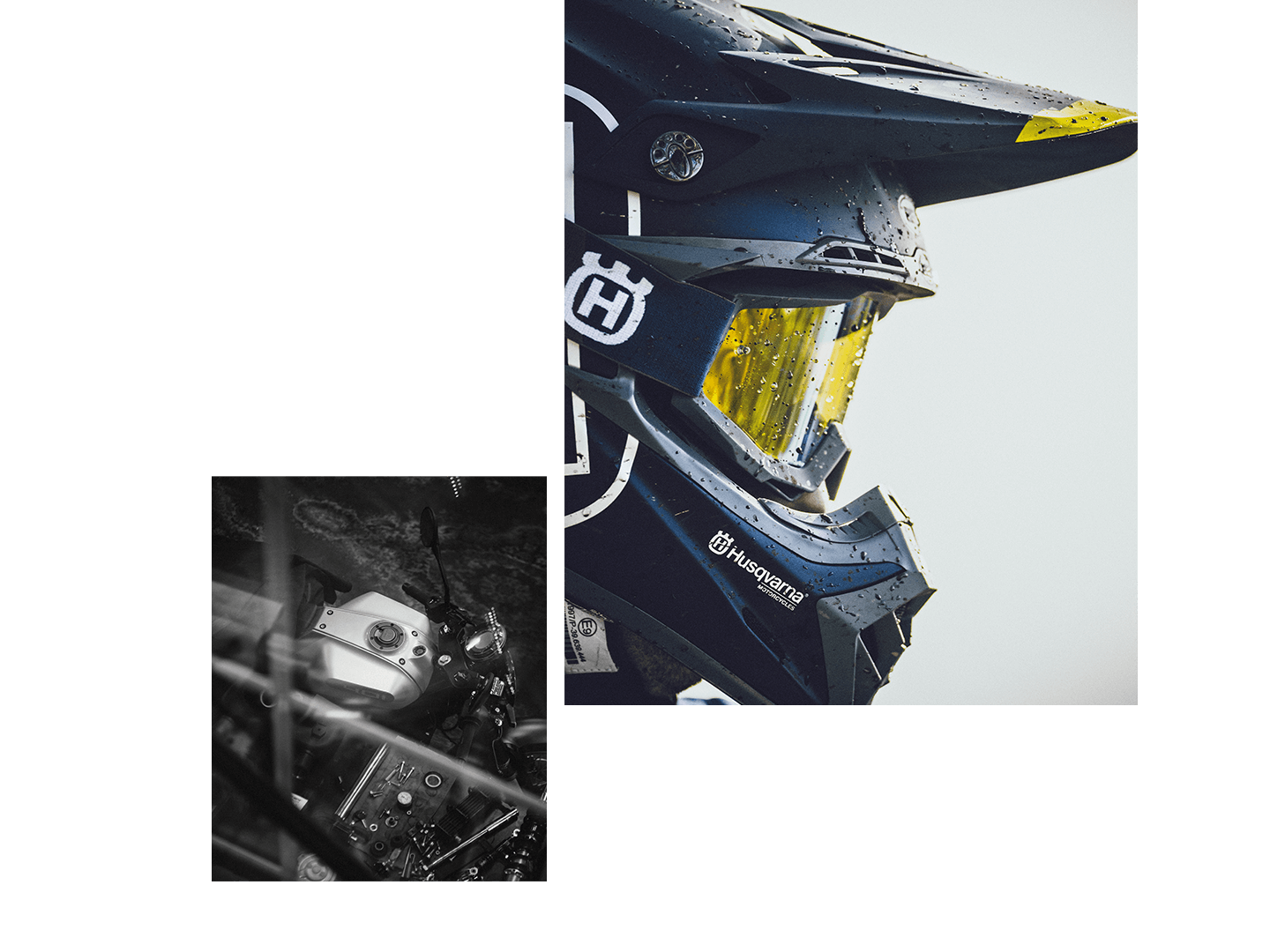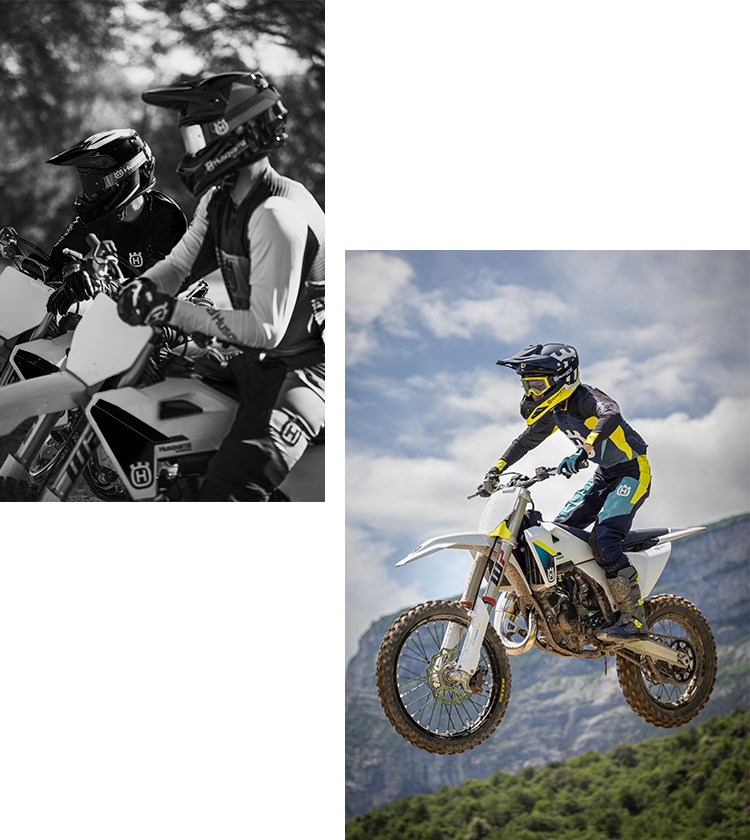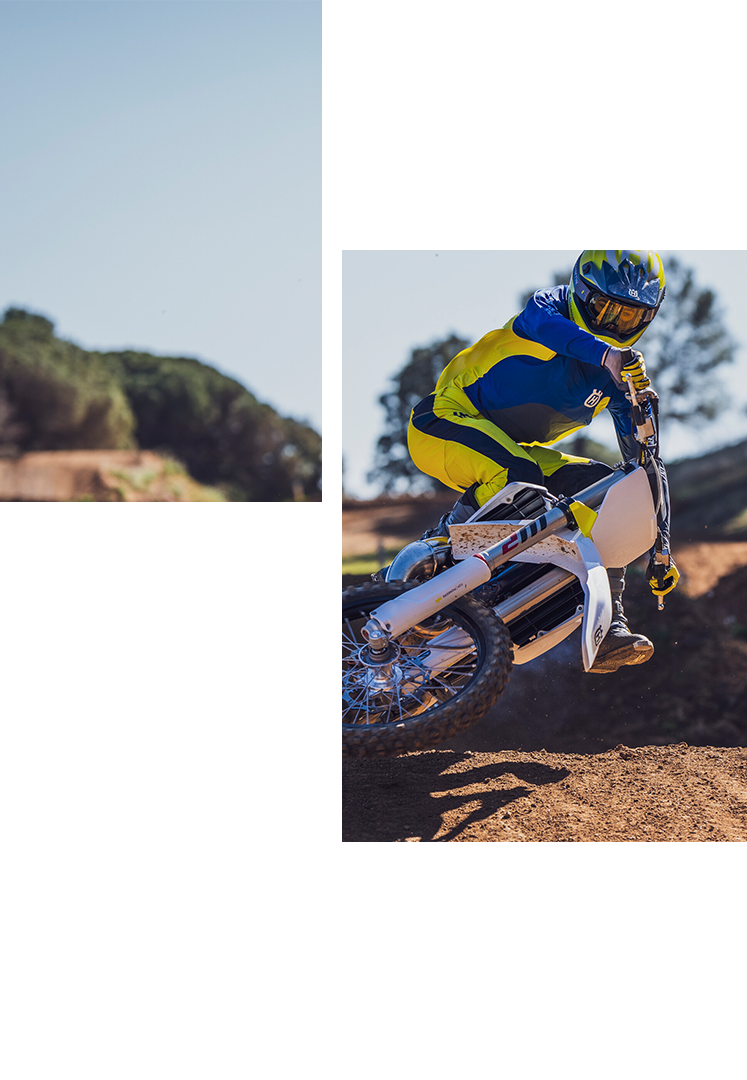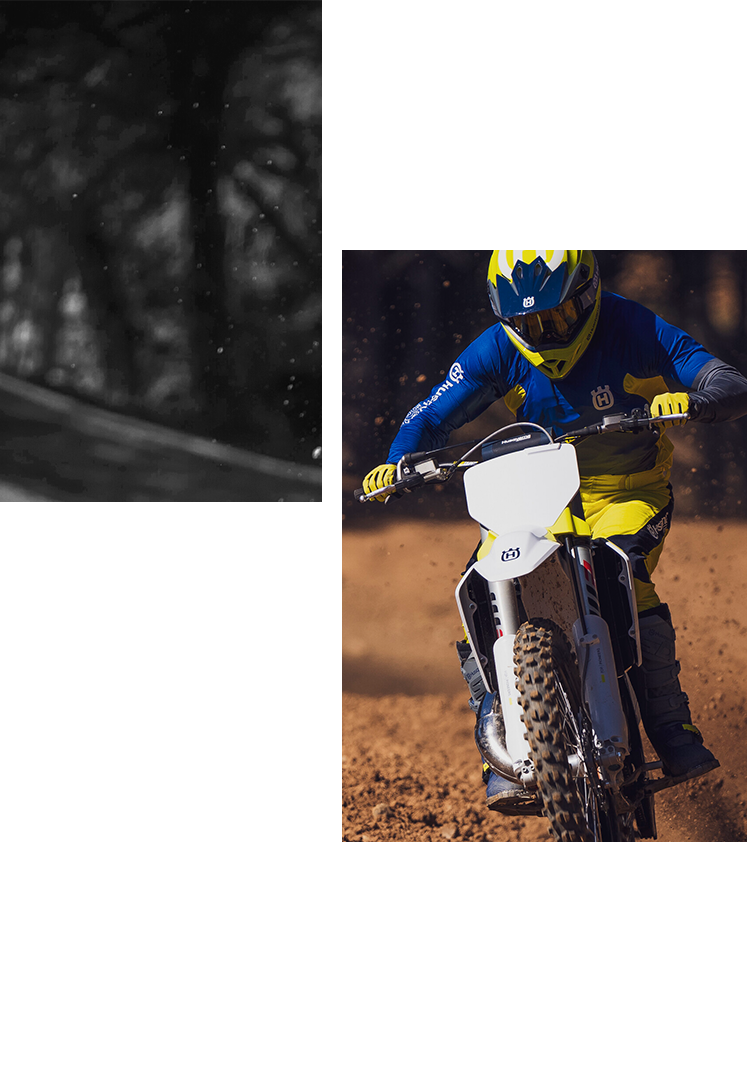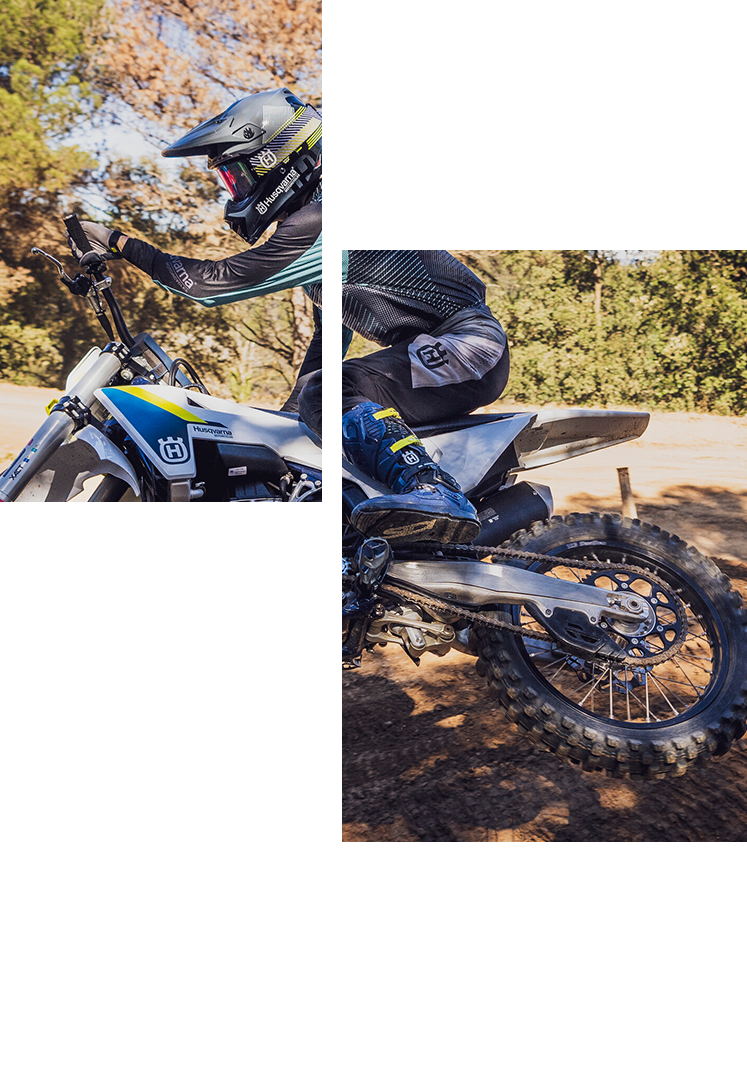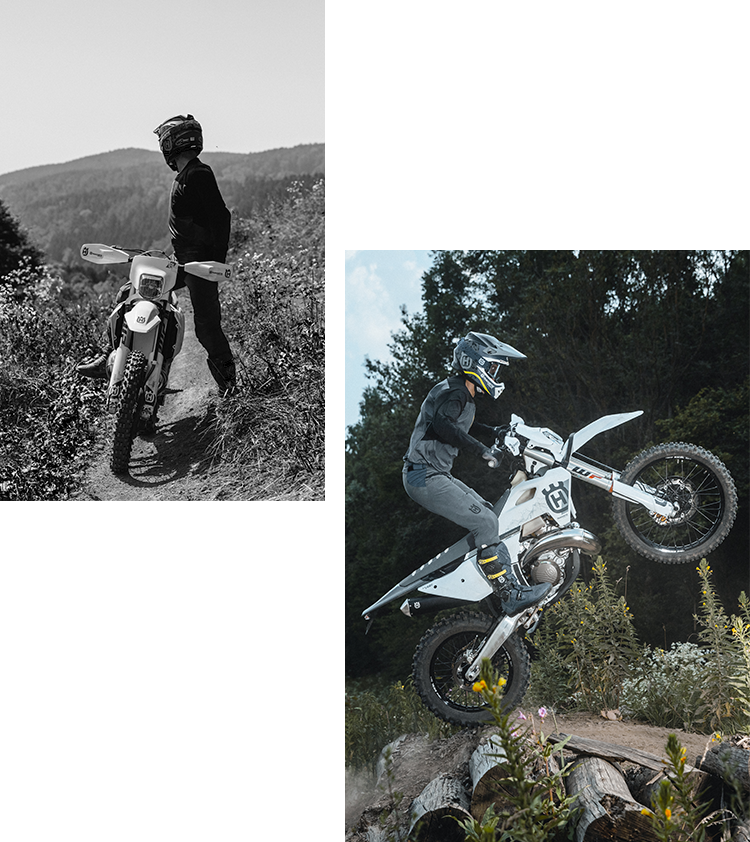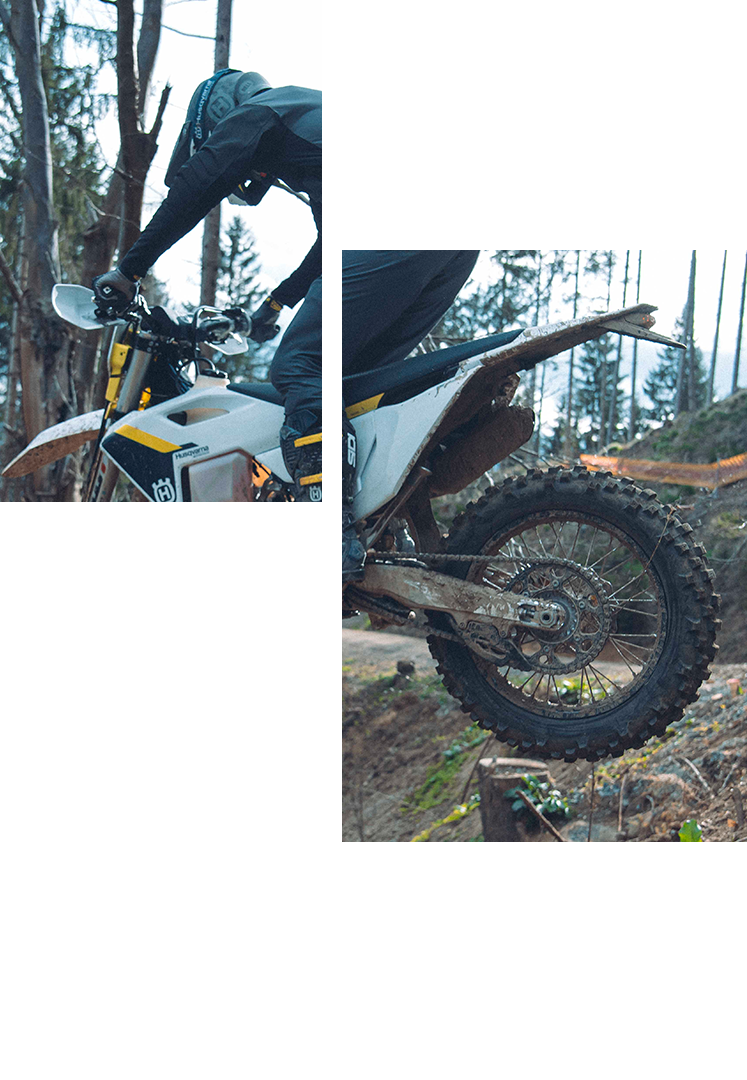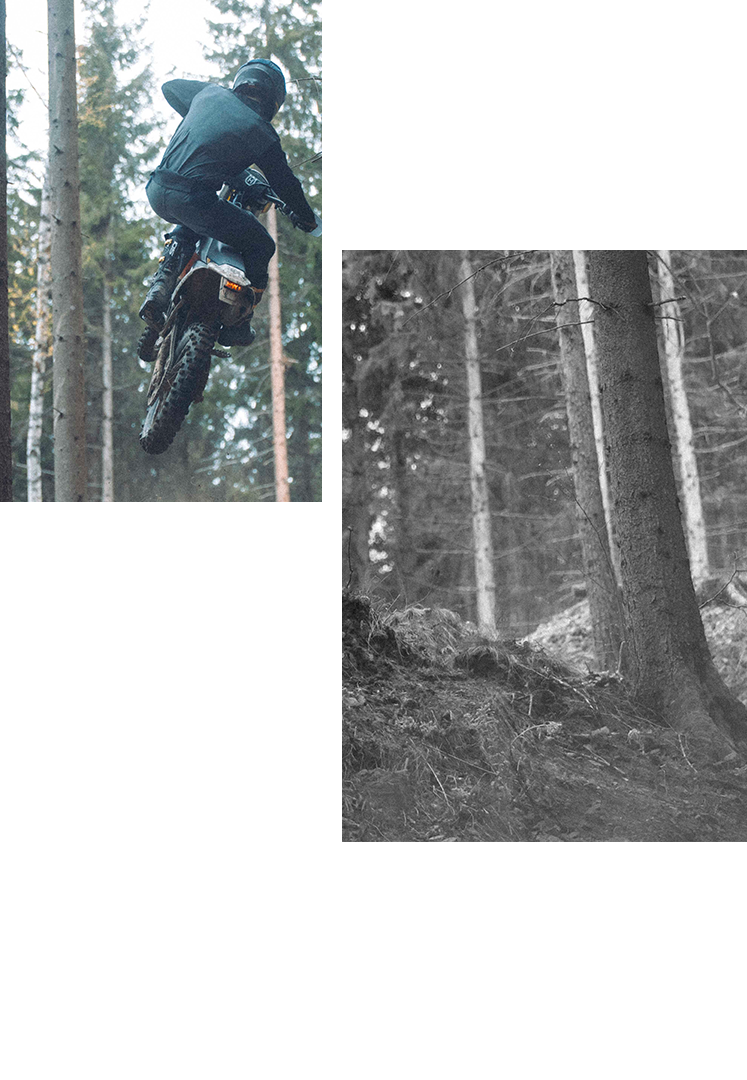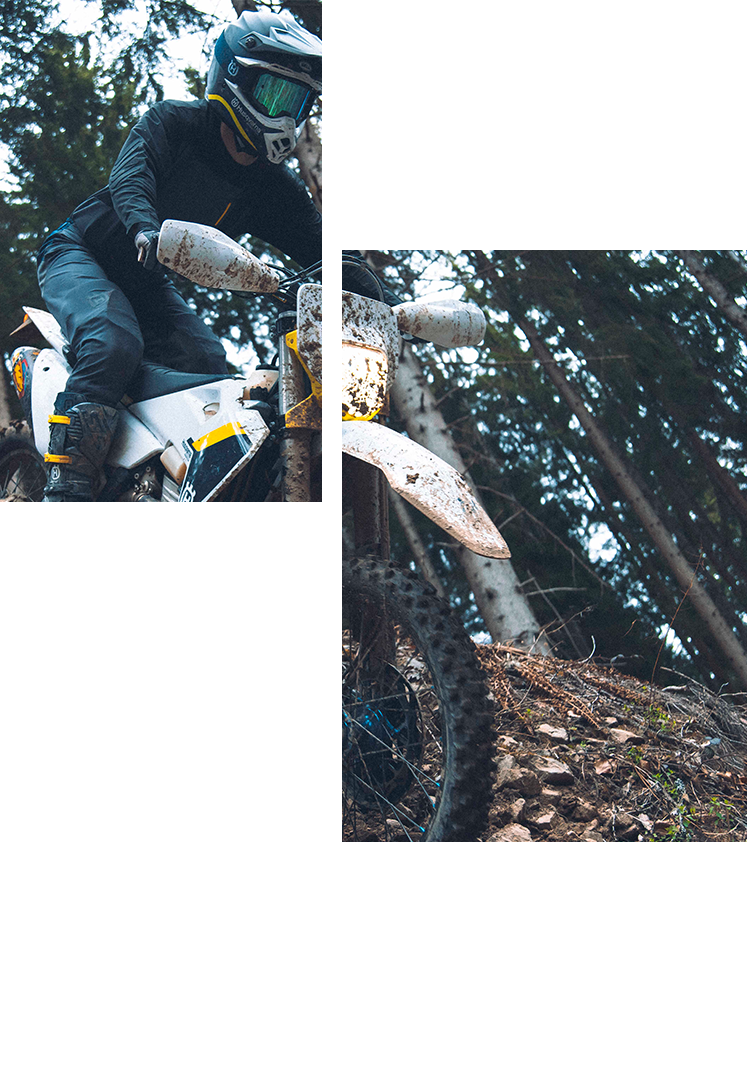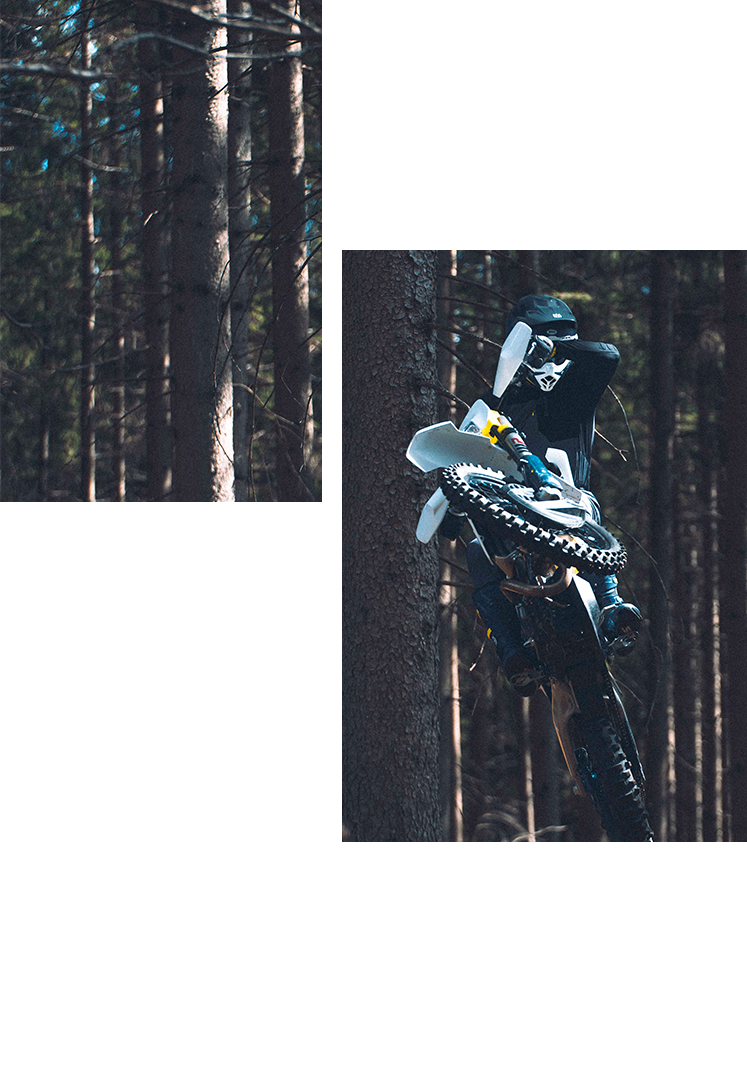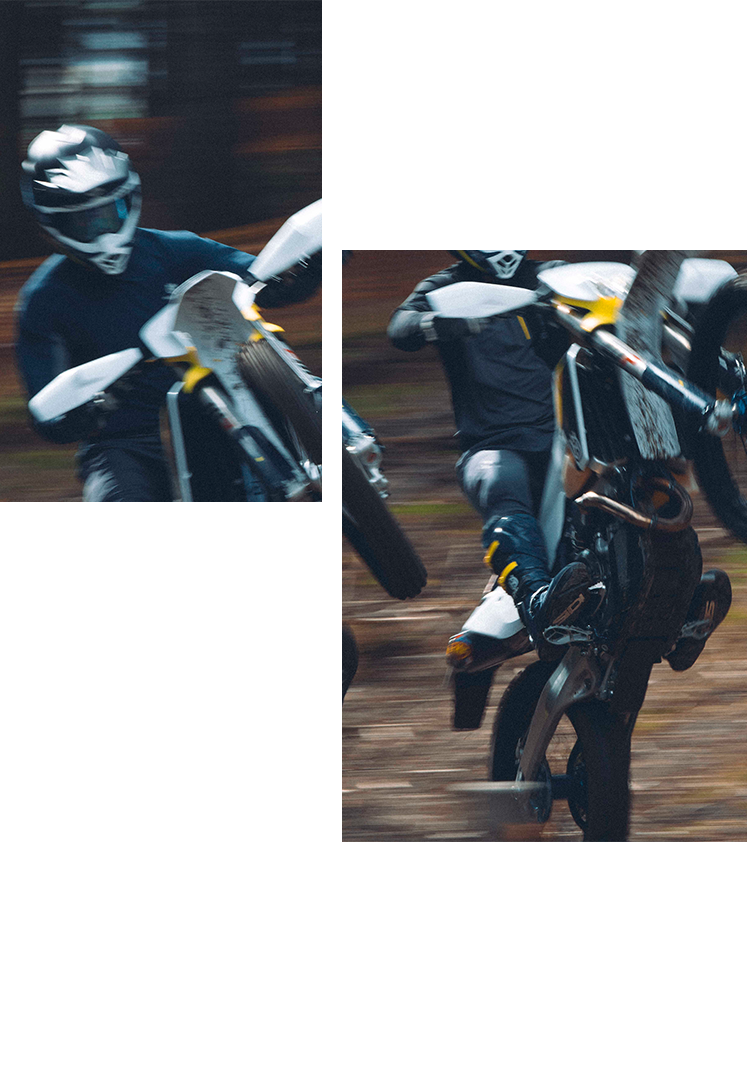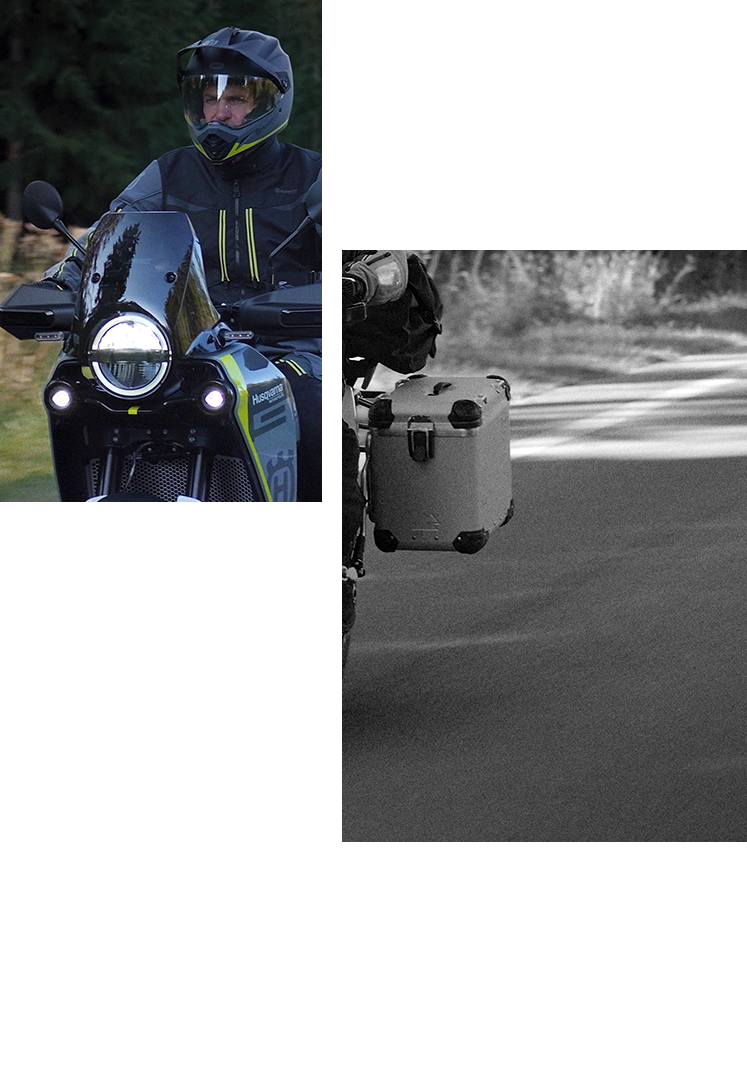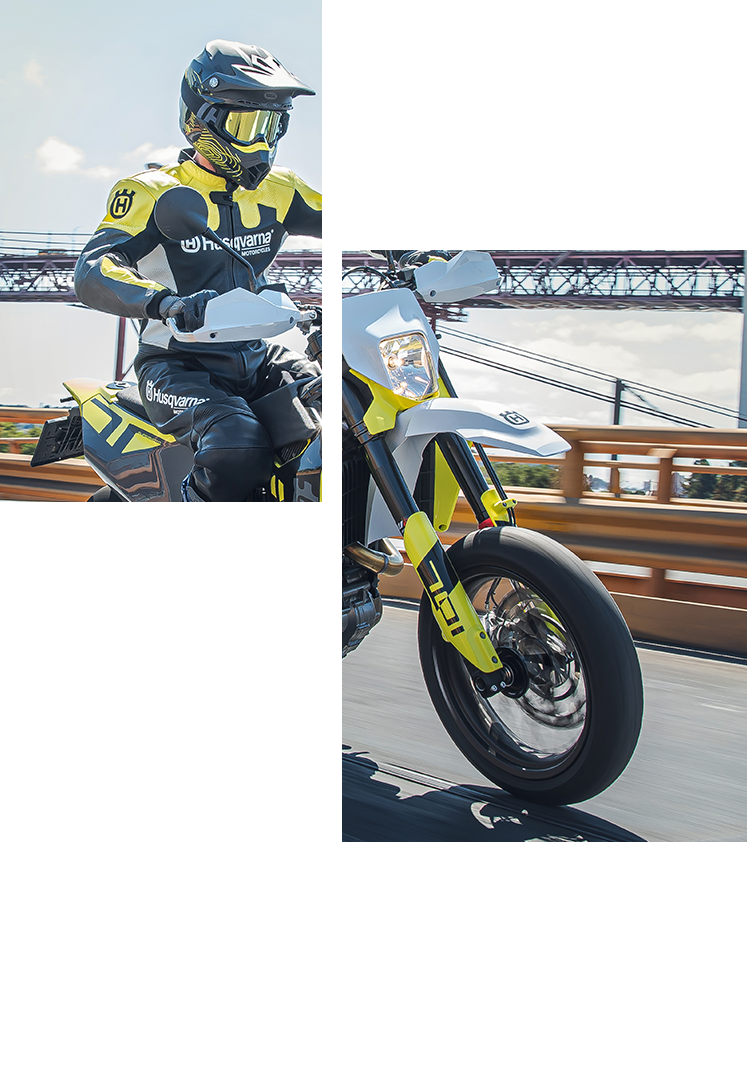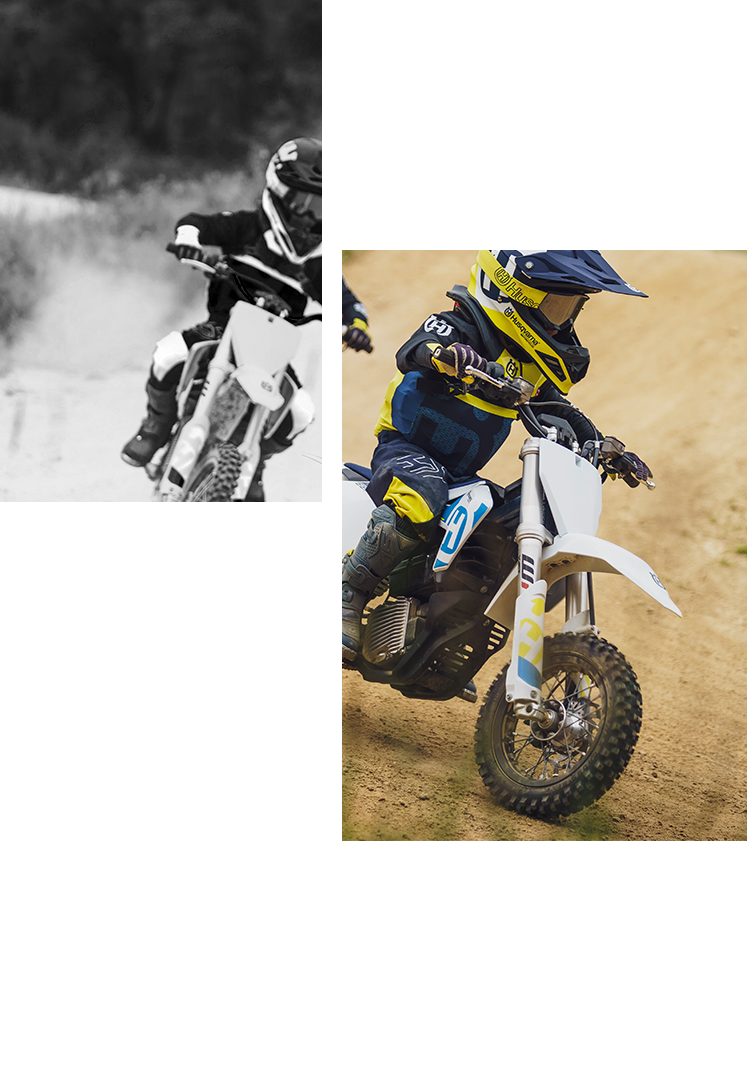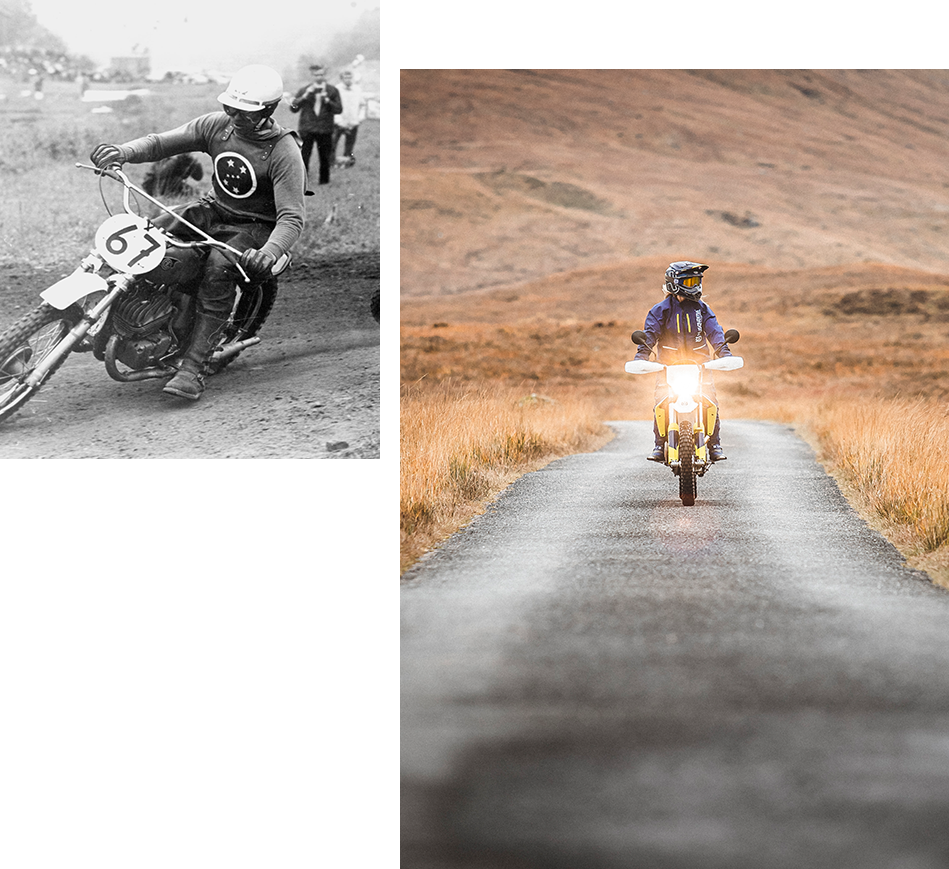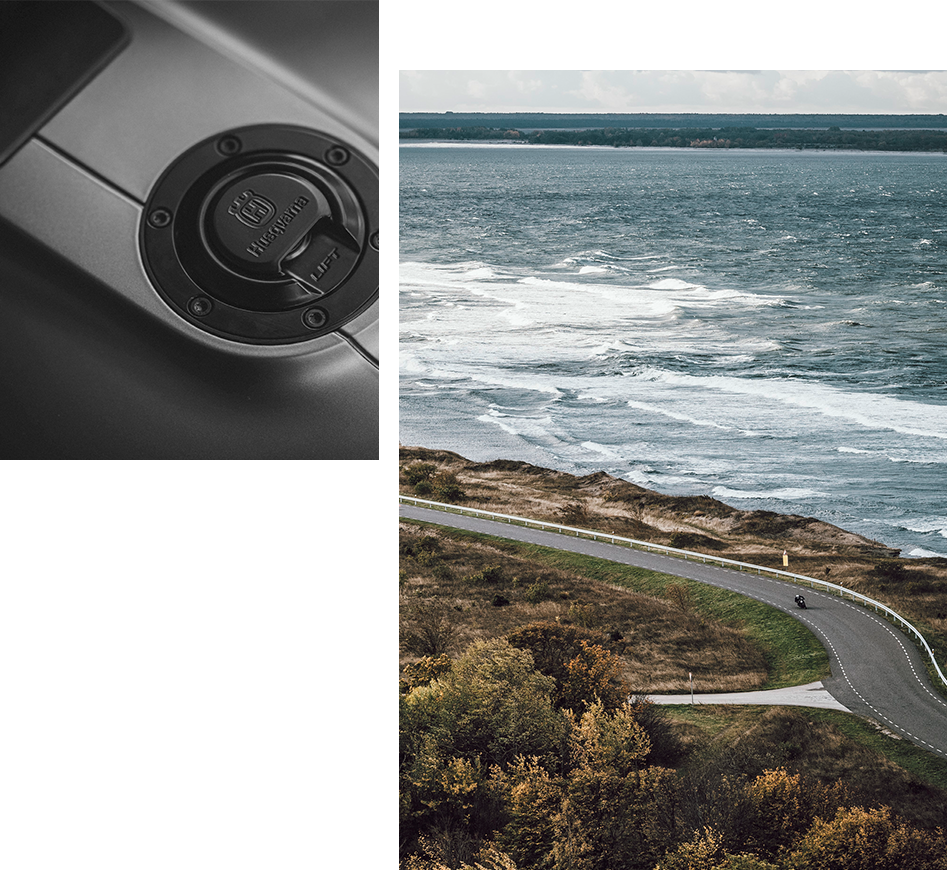Pinning Husky Throttle
By Kenneth Olausson
Chief engineer Ruben Helmin was an important man when it came to Husqvarna's motocross and enduro success. In 1954, he joined the factory at the age of 29 and had not only an eye for technical matters, but he was also an intelligent individual. Looking sharp, I met Helmin on worldwide tracks having many opportunities to get to know him well.
During the winter of 1954, reports of the new "Silver-Arrow" appeared in the magazine "Racing", which was the ultimate motoring newspaper at the time. This weekly magazine presented an in-depth story of the recently introduced Husqvarna motorcycle, which was to become a big success for the Swedish company. But that would happen later. The first task for Ruben Helmin was to engage in developing the frame of this newcomer and trying to improve the machine's suspension. Some customers complained about the front forks rubber, which were too weak and lead to a weak elasticity.
At the introduction of the Silverpilen, there were no racing-enduro machines to be bought. And the options available for racing were negligible as the machine’s legal weight of 75 kg had to be respected. Consequently, the new Silverpilen was neither intended for competition, nor was it considered a suitable machine for offroad riding, in those days named "T" for "Reliability" in Sweden. In the late summer of 1955 Husqvarna engineer Ruben Helmin said, "if you're going to race with this machine, you have to blame yourself. The Silverpilen is a vulnerable machine, not made for racing purposes. The suspension is not good enough on the wooden trails, gravel roads and dizzy ruts."
Ruben Helmin would regret these words later. To some extent, he was right, but the future proved Ruben Helmin totally wrong as this motorcycle was the beginning of a golden era for Husqvarna. In the winter months from 1958 to 1959, Husqvarna prepared their new 250cc machines in the factory. Helmin and his engineers tuned the power plant, introducing a completely new alloy cylinder, made to improve the engine's performance.
In the test bench, the lab people noted an output of 15 horsepower at 6,000 rpm - a satisfactory figure! The leading-link front forks were overhauled for better suspension. Only 10 units were built and distributed among the following leading riders: Rolf Tibblin, Stig Richardsson, Lennart Dahlén and Torsten Hallman. There were also a few other selected riders who enjoyed these machines. Everybody looked forward to an exciting season and all the efforts paid off with Rolf Tibblin's 1959 overall victory in the 250cc European Championship.
Describing Helmin’s character is a mixture of enthusiasm and strictness. Ruben: "A lot of our customers were looking for high-quality machinery and when they saw that Husqvarna was winning motocross-titles, they jumped on the winning wagon". Competition victories are selling bikes in modern times - not only in reminiscence. In 1963, Husqvarna built their first factory replicas for sale on Helmin’s recommendation. In total there were a hundred motocross machines and this batch was sold out. Later in the 60s, Ruben was occupied in the factory's intention at motocross championships. Winning eight individual titles in this important decade: "I don't remember how many miles I travelled in these years, but it seemed like home was the last place where I spent time," the sharp engineer said. “As years went by, we got more and more involved in competition worldwide, not least in the United States where business was booming.”
Husqvarna also delivered motorcycles to the Swedish Army, which demanded time and development from the technical department. "The model 256A was a true military motorcycle. At first, they asked for a quote of 5,000 units, but in the end the military just bought a thousand green-painted machines. There was more work than profit," concluded Helmin.
In the early 1960s, Helmin had an idea of putting two 250 engines together. It resulted in a potent twin-power plant with a displacement of half a litre. But it was not until 1967 that he began developing his thoughts. Helmin managed to integrate double 2-strokes into one power unit. After tests, the 137 kg Husky beast was over-bored to 504cc, which made it eligible for the FIM-cup during 1969. They won the cup and a 492cc machine was shipped to the Mexican Baja 1,000 race. With the ace riders Gunnar Nilsson and J.N. Roberts, Husqvarna also won this classic event, with a good margin. However, the double-engine model never reached production despite success both in Europe and the United States. In the 1970s, the big peak came after Bengt Åberg, Heikki Mikkola and Håkan Carlqvist had won individual motocross world titles. Helmin was responsible both in the 250cc and 500cc classes where his services were demanded on the highest level. "It was a superhot period and difficult deciding to which Grand Prix I should travel," Ruben said, scratching his head.
Helmin stayed in the technical department for 19 years until 1983, when he was appointed Head of Quality and Racing Department. At this time, he strongly recommended a future where the 2-strokes and the 4-strokes would be separated. Helmin was convinced that environmental concerns would soon prevail, and these machines would be held apart into two classes, where the 2-strokes would suffer. Being a forward thinker with strong visions was his specialty. Three years later, the Italian Cagiva factory bought Husqvarna, which meant that mister Helmin again changed positions. The wise old man now had the responsibility for domestic sales. In 1989, Ruben went on to establish Husaberg as a new motorcycle company. Together with a small group of people, the machines were successful in enduro. In 1994, Helmin's career came to an end. He had been in the two-wheel business for more than 40 years and at the age of 84, Ruben died peacefully, knowing to have served Swedish motorcycling successfully.
